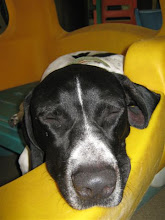The keys to successful housetraining are confinement and supervision. Set up and implement a consistent structure with these components:
- Use a crate, small pen, or small confined area in your home;
- Exercise constant vigilance, be observant;
- Resign to taking your dog out - leashed;
- Reinforce correct elimination with high-value food;
- Use a verbal cue that your dog learns to associate with elimination;
- Adhere to set feeding/watering times;
- Choose a specific outdoor "potty place", and;
- Be patient.
Your daily goals are
prevent accidents and reward outdoor elimination.
Most fold-up, wire crates are sold with a divider. You can use it to shrink your dog's space and discourage crate elimination. Avoid bedding in the crate for a time, as it could serve to absorb urine.
Vigilance is essential. You must watch your dog constantly while he's unconfined. Each accident in the house is a lost opportunity and a step backward in the training program. You are developing your dog's preference for toileting outside. If your dog has an accident,
do not shove his nose in the pile or puddle. This outdated tactic is an aversive that teaches your dog nothing...except to mistrust you.
You must take your dog on her potty trips
on the leash. Otherwise, you may not see whether she eliminates, and you're certainly in no position to reinforce (reward) promptly.
Reinforce outdoor elimination with a high-value food reward, e.g. chicken, cheese, or hot dog. Elimination is a self-gratifying behavior: the dog feels relief. Your dog will learn that "going" outside works to get him a wonderful treat.
Teach your dog a cue word or phrase, such as "hurry up" or "do your business". She will learn to associate that cue with eliminating and earning a food reward.
Housetraining is easier with a set feeding and watering schedule. (Refer to the blog article, "Free Feeding Your Dog? Don't Do It.") Free access to food and water makes it nearly impossible to control "output". Puppies normally require 1 ounce of water per pound of body weight.
You can designate a small area on or near your property as a "potty place". Your dog associates this area with a bathroom trip, and you have a manageable clean-up job.
Successful housetraining requires a concentrated effort. Dogs learn at different rates and respond best to a calm, patient, and unemotional demeanor. Housetraining time varies depending upon your dog, his history, and your approach to the training. If you're observant, you'll begin to recognize your dog's signals. Pacing, sniffing a particular spot, and circling are all pre-elimination indicators.
If your housetraining plan isn't working, check with your vet. He/she can determine whether a health problem exists which could prevent success.
For further information, contact:
Kimberly B. Mandel
CPDT-KA
908.822.9200
.jpg)